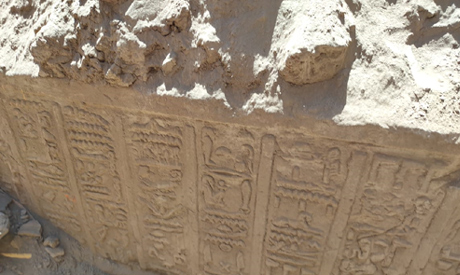Egyptian archaeological team opens the door on ancient treasure trove
Archaeology org reports that a team led by Mohammed Abd Al-Badea discovered a series of rock-cut openings in a cliff while surveying Upper Egypt’s valley of Abydos. No burials have been found at the site, but pottery suggests it was used during the Ptolemaic period, from 304 to 30 B.C.

An extensive series of mysterious opening cut high in a cliff inside the sacred valley south of the Royal Cemetery of Umm Al Qaab has been discovered by the Egyptian archeological investigations team, headed by Mohammed Abd Al-Badea and documenting human activity from prehistoric ages to modern times about eight-kilometer in the west desert of Abydos.
Mostafa Waziri, secretary-general of the Supreme Council of Antiquities, said that examination showed that these openings are entrances to carved out chambers, which probably have sacred religious importance.
Some openings lead to one chamber, while others lead to groups of two, three, and five chambers.
The groups are interconnected by narrow doorways cut through the bedrock wall. The chambers are rarely more than 1.20 meters high and are undecorated, but most have cut-rock features such as shallow niches, benches, rows of circular depressions or troughs cut in the floor, and many small holes in the walls just below the ceiling.

Besides most of the opening, Waziri said, are ropes or handholds.
Some of the chambers are enlargements of natural tunnels in the bedrock created by water flowing over thousands of years.
The cliff chambers are cut above deep vertical well-like shafts that follow natural water tunnels down into the bedrock, but these are now blocked by debris.
There is no evidence of burials inside any of the chambers, and they do not appear to have been tombs. Material evidence for the function of the complex is scant.
A single graffiti in one of the chambers gives the names of one Khuusu-n-Hor, his mother Amenirdis, and grandmother Nes-Hor.
These names, as well as the pottery found in and around the chambers, suggests that the complex probably dates to the Ptolemaic period, 332-30 BCE.
The only carved decoration consists of two small but unusual figures cut in bas relief on the side of one entry point.
Matthew Adams of the Institute of Fine Arts of New York University and co-director of the North Abydos Expedition, who is collaborating with the survey mission, suggests that the chambers’ location inside the sacred valley of Abydos and their hard-to-reach position high on a cliff means that they may have had great religious significance.
The exploration of the area is at a preliminary stage, and much additional research and on-the-ground work will be needed.
